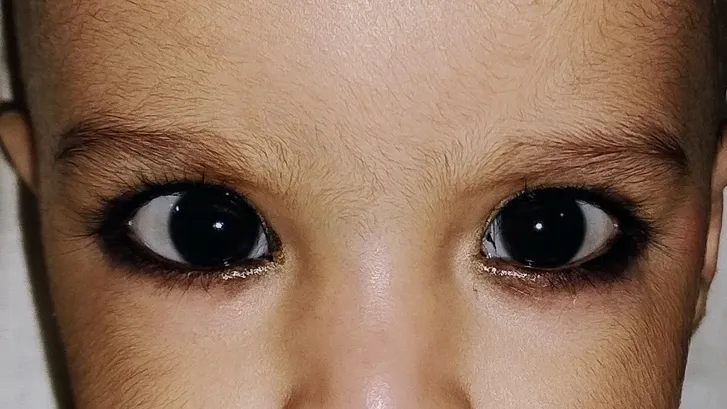Imagine a parent’s concern when they notice their child’s eyes seem misaligned, appearing to point inward. The immediate fear may be strabismus, a condition where the eyes don’t align properly. However, in some cases, what looks like esotropia (inward deviation of the eyes) may actually be pseudoesotropia, a benign optical illusion.
Pseudoesotropia is a term used to describe the false appearance of eye misalignment when, in reality, the eyes are correctly aligned. It often occurs in infants and young children due to unique characteristics of the face and eyes. In this blog, we’ll explore what pseudoesotropia is, its causes, and why it’s important to distinguish it from true strabismus.
**Understanding the Illusion: Causes of Pseudoesotropia**
Pseudoesotropia primarily occurs because of the following factors:
1. **Wide-Epicanthal Folds**: Infants and young children often have wide epicanthal folds, the skin between the inner corner of the eye and the nose. These folds can create an optical illusion of eye misalignment when, in fact, the eyes are parallel.
2. **Facial Anatomy**: The shape and alignment of a child’s facial features can play a significant role in pseudoesotropia. A flat or broad nasal bridge can make the eyes appear closer together, giving the illusion of inward eye turn.
3. **Infant Eye Development**: Babies are born with relatively large eyes in proportion to their faces. As they grow, their facial features mature and catch up with their eye size. During this transition, it can seem like the eyes are turning inward, but it’s just a temporary phase.
**Distinguishing Pseudoesotropia from True Esotropia**
Pseudoesotropia can be misleading and worrisome for parents, as it mimics the appearance of true esotropia, a form of strabismus. To distinguish between the two:
1. **Cover-Uncover Test**: An eye care professional can perform the cover-uncover test to assess if there is any true eye misalignment. In pseudoesotropia, the eyes should maintain their alignment when one eye is covered.
2. **Observation Over Time**: Pseudoesotropia often resolves naturally as the child’s facial features develop. In contrast, true esotropia typically persists or worsens with time.
3. **Consult an Eye Specialist**: If there are any doubts or concerns, it’s essential to consult a pediatric ophthalmologist or optometrist. They can provide a thorough examination and accurate diagnosis.
**Why It Matters: Early Detection and Peace of Mind**
Distinguishing pseudoesotropia from true esotropia is vital for several reasons:
1. **Avoiding Unnecessary Treatment**: Misdiagnosing pseudoesotropia can lead to unnecessary eye treatments, such as patching or surgery, which could have potential risks and financial implications.
2. **Peace of Mind for Parents**: Correctly identifying pseudoesotropia can provide parents with reassurance and reduce anxiety about their child’s eye health.
3. **Early Intervention**: On the other hand, early detection of true esotropia is essential for appropriate intervention, as early treatment can yield better results in managing the condition.
In conclusion, pseudoesotropia is a common optical illusion in infants and young children that can mimic true esotropia. While it can be unsettling for parents, it’s crucial to rely on professional eye care to distinguish between the two. Regular check-ups with a pediatric ophthalmologist or optometrist can ensure accurate diagnoses and appropriate treatment, if necessary. Understanding pseudoesotropia is not only about clearing up an optical illusion but also about providing peace of mind and the best care for our children’s eye health.



